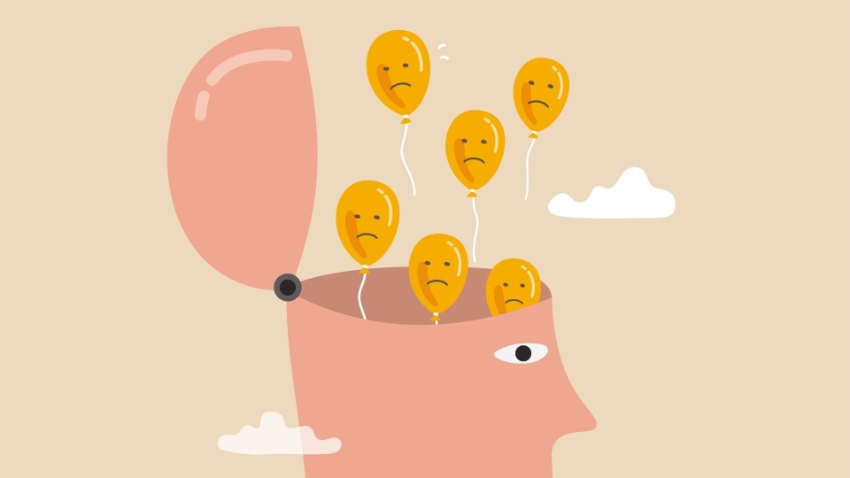
The door of Ch’an is entered by Wu. When we meditate on Wu we ask “What is Wu?” On entering Wu, we experience emptiness; we are not aware of existence, either ours or the world’s.
E-MAIL: admin@relaxmid.com
Negative thought patterns can feel like an inescapable loop, affecting mental health, relationships, and overall well-being. These patterns mean that if it’s overthinking, self doubt or negative pessimism it is likely going to increase stress and anxiety. A practice that is based on ancient traditions, mindfulness can help us break these cycles, and regain our thoughts. This article explores how mindfulness works, benefits, and actionable techniques to combat negative thought patterns.
Negative thought patterns are habitual thinking that distorts perception and leads to feelings of inadequacy, hopelessness, or fear. These include:
Somehow these patterns usually arise from stress, past experiences or even societal pressures and perpetuate cycles of anxiety and low self esteem.

Any time your body feels overly emotional or wounded, take a deep breath and relate to that feeling as your own personal awareness. Mindful thoughts influence not reacting to the negative on the spot but the other way itself by observing negative thoughts as fleeting events and keeping them away from your mental space.
Mindfulness will help you focus on the present moment, so you aren’t thinking about things that are not necessary to worry about in the past or the future.
Through the practice of mindfulness we experience our thoughts without judgment, so we can respond to them calmly and remain emotionally reactive.
Mindfulness helps to accept life and gives you tools to combat life’s stresses with greater poise and clarity.
Instead, kindness toward yourself is what mindfulness supports, the practice of not self-critiquing, but instead understanding and patience.
One of the easiest ways to anchor into the present moment is to bring your focus to your breath.
Sit up straight; close your eyes; take slow, deep breaths. When you take a breath in and breathe out, notice how you feel air enter and exit your body. Gently remember yourself to your breath if your mind starts to wander.
Benefit: It calms your mind and downward spiral of negative thoughts.
Instead of sitting on negative thoughts try to reel it away and label them to get some mutual distance.
If you have a thought that starts as a negative thought, so mentally label it —e.g., “worry,” “judgment,” “fear.” Let it go, without further analysis.
Benefit: It takes all the emotional charge out of the thought.
It’s all about noticing what our physical body is doing and using that as a way to anchor and stay present.
Lie down or sit comfortably. Move from top of your head to each part of your body without judgment, and without going from one to the other.
Benefit: When you turn your focus to the body, you can break that cycle of rumination.
Focusing on positive aspects of your life counters negative thought patterns.
Three things a day, everyday for the rest of your life, print out three things you are grateful for, say them and move on. Sometimes it’s as simple as a good meal or a kind word from a friend.
Benefit: While gratitude rewires the brain to notice positive experiences, it works away at reducing negativity.
In other words, it is a practice to direct positive thoughts, the same thing approaching even the others with compassion.
And close your eyes perhaps and repeat things like, “May I be happy, healthy, and free from suffering.” Start with those you love the most but gradually extend these wishes to acquaintances and even uncomfortable people.
Benefit: Loving kindness meditation helps you regulate your emotions, ease out feelings of being unworthy and reduce feelings of resentment and self-criticism.

Formal meditation sessions aren’t the only time that mindfulness needs to be practiced. Integrate it into your daily routine with these simple steps:
Small practices like these cause you to think differently about negative thoughts.
Mindfulness has been used by many to beat negative thinking. For example Emma, busy professional who also suffered from continual chronic over thinking and self doubt. She herself committed to daily 10 minute mindfulness practice and saw a huge difference in focus and emotional stability.
The mindfulness she learned helped her to dispute negative thoughts and thought patterns and become more confident and positive.
Solution: Do start with short sessions (2–5 min) and keep increasing as you build a habit.
Solution: It’s not about eliminating your thoughts. The heart of it is to observe them without judgment and gently reflect.
Solution: Mindfulness is one that you can easily fit into your existing routines — perhaps during that morning coffee or evening walk.
Breaking free from negative thought patterns is a journey, but mindfulness provides a clear and compelling path. They help create awareness and learning about observing thoughts without judging them and then you can break cycles of negative thinking and develop a mind which is more balanced, resilient.
Do start small, be patient with yourself and definitely go with the process. With practice, mindfulness can change the way you think, and the way you feel, how you handle the stuff that comes our way.
